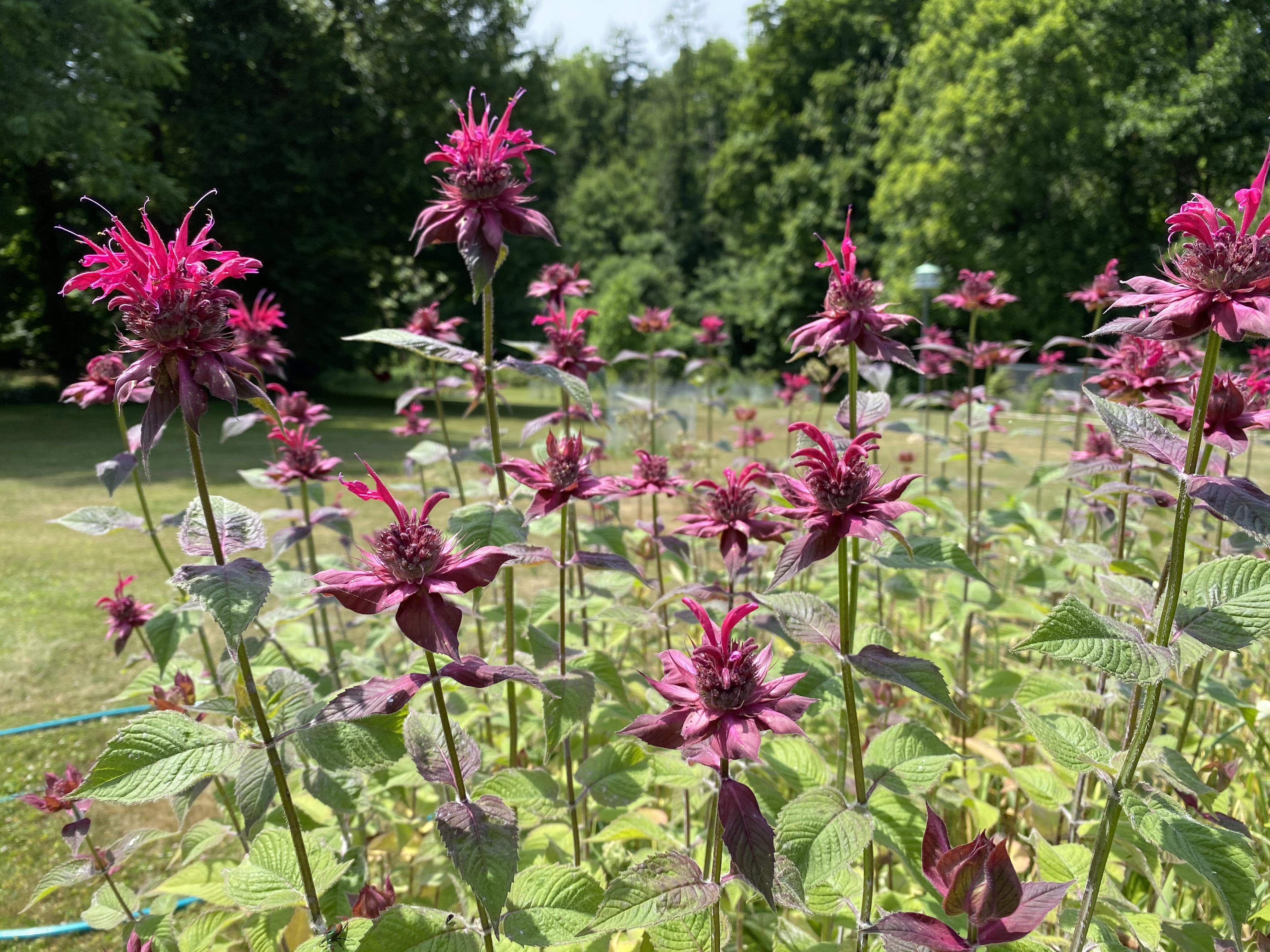
Bee Balm
Monarda didyma
Basic Information
🌿 Family: Lamiaceae🗺️ Zone: 3-9
Other Names:
- Bergamot
- Oswego Tea
- Scarlet Beebalm
- Wild Bergamot (Monarda fistulosa)
🌡️ Ideal Temperature : 40°F – 85°F
🔥 Heat Tolerance: Up to 100°F
❄️ Cold Tolerance: Down to -35°F
🌱 Type: Perennial
Layers
- Herbaceous
Functions
- Edible
- Medicinal
- Pollinator
- Wildlife Attractor
- Mulcher
- Dynamic Accumulator
- Border Plant
- Pest Management
Pests
No pests associated with this plant.
Description
Bee Balm (Monarda didyma) is a hardy, herbaceous perennial known for its vibrant red, pink, or purple flowers that attract bees, butterflies, and hummingbirds. The plant grows between 60–120 cm (2–4 feet) tall with square stems and aromatic, lance-shaped leaves.
It thrives in moist, well-drained soil and spreads via rhizomes, forming dense patches over time. The flowers bloom from mid to late summer, providing a long-lasting nectar source. Bee Balm is commonly grown in pollinator gardens, herbal medicine gardens, and as a companion plant in vegetable gardens.
🌞💧 Sun and Water Requirements:
- Prefers full sun but tolerates partial shade.
- Grows best in rich, well-drained soil with consistent moisture.
- Moderate water needs; avoid waterlogging to prevent powdery mildew.
✂️🫘 Methods to Propagate:
- Seeds: Start indoors 8–10 weeks before the last frost or direct sow in spring.
- Division: Easily propagated by dividing root clumps in early spring or fall.
- Cuttings: Stem cuttings can be rooted in water or moist soil.
🧑🌾👩🌾 When to Harvest:
- Leaves can be harvested anytime during the growing season for tea or fresh use.
- Flowers should be harvested at peak bloom for medicinal or culinary purposes.
- Regular pruning promotes new growth and extends the flowering season.
Purpose
Bee Balm serves multiple functions in a permaculture system:
- Edible: Leaves and flowers are used in teas, salads, and as a garnish.
- Medicinal: Traditionally used to treat colds, sore throats, and digestive issues.
- Pollinator: Flowers attract bees, butterflies, and hummingbirds.
- Wildlife Attractor: Provides nectar for pollinators and shelter for beneficial insects.
- Mulcher: Leaves decompose quickly, adding organic matter to the soil.
- Dynamic Accumulator: Absorbs nutrients such as phosphorus and potassium, enriching soil health.
- Border Plant: Often used as an ornamental border in pollinator gardens and food forests.
- Pest Management: The strong aroma repels mosquitoes and deters some garden pests.